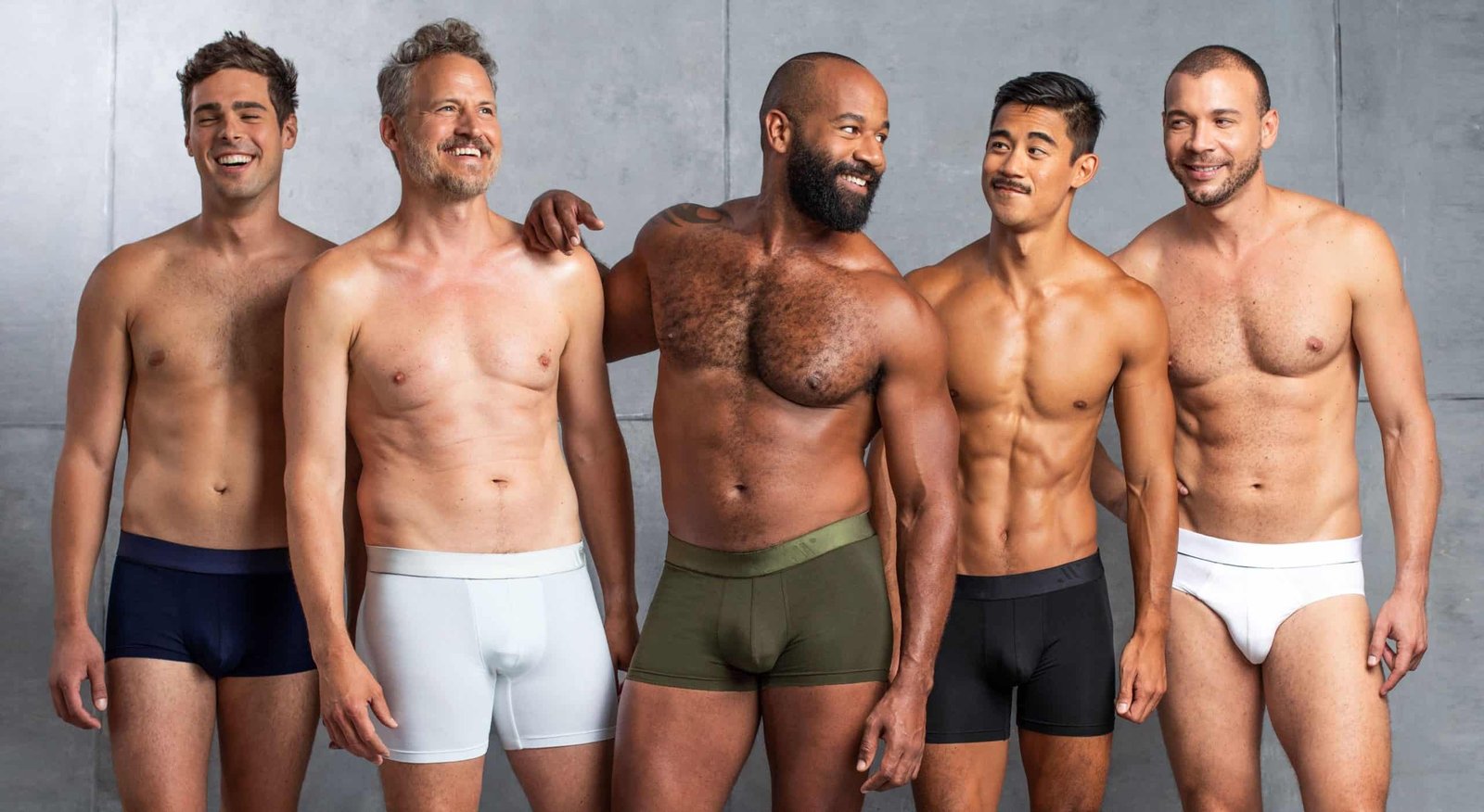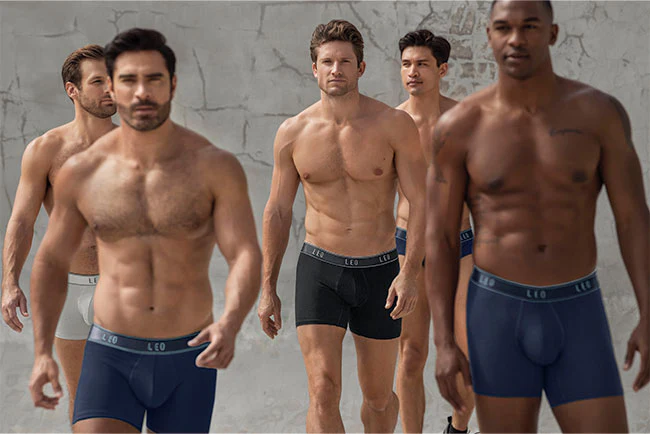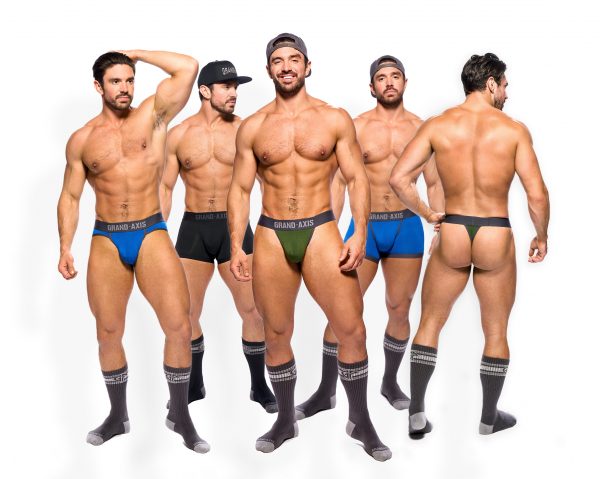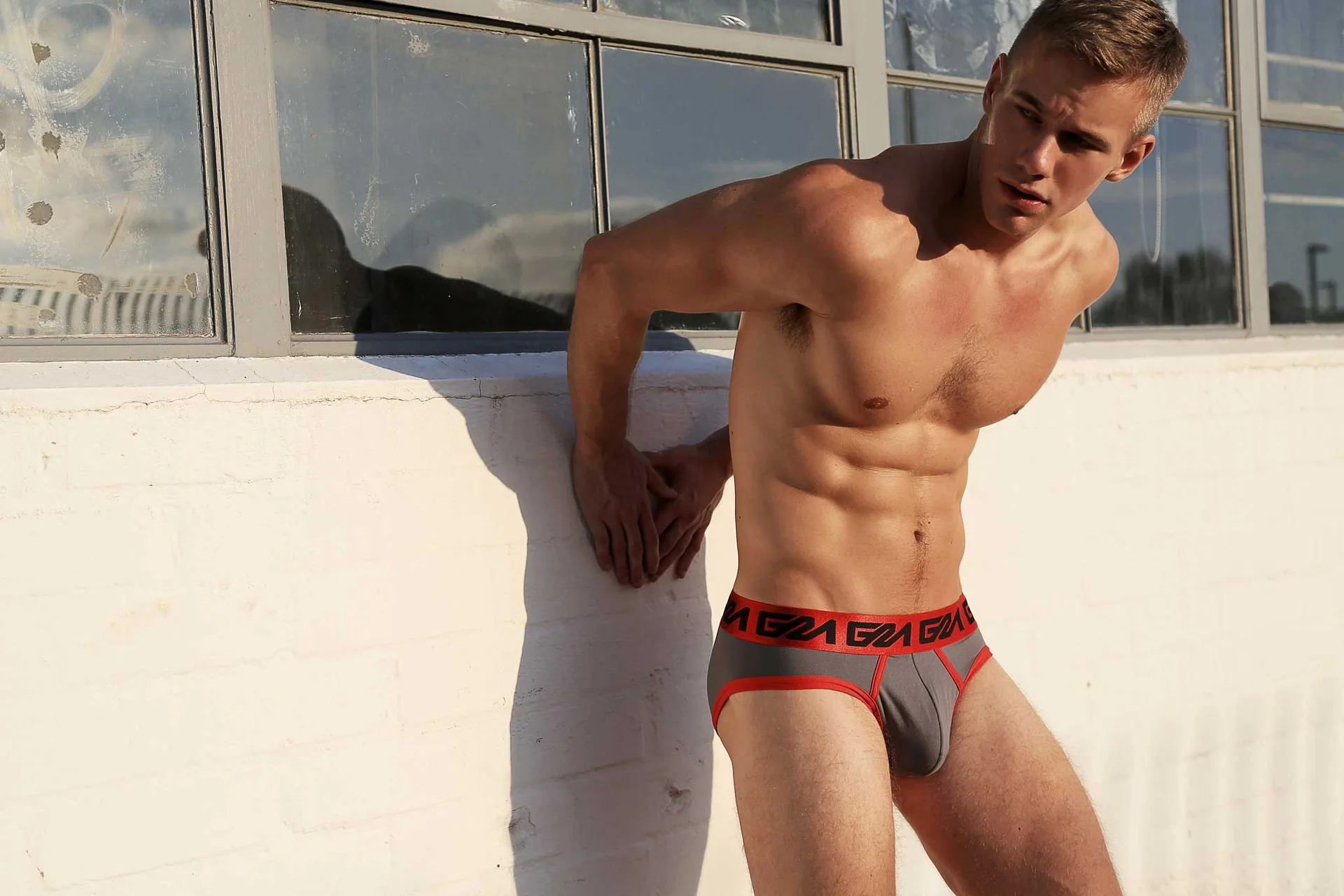The Evolution of Men’s Underwear: A Journey Through Fashion and Function


Introduction to Men’s Underwear
Men’s underwear serves a fundamental role in daily attire, offering both comfort and support while also functioning as a protective layer beneath clothing. Historically, the concept of underwear dates back thousands of years, evolving from simple loincloths worn in ancient civilizations to the diverse range of styles available today. The early forms of men’s underwear were primarily utilitarian, designed to provide basic coverage and hygiene, reflecting the societal norms of the time.
As fashion progressed through various eras, so did the design and purpose of underwear. By the 19th century, undergarments began to adopt a more specified structure. The introduction of materials such as cotton allowed for greater breathability and comfort, which transformed men’s underwear into a staple item in wardrobes. Furthermore, the Victorian era placed an increased emphasis on modesty and propriety, prompting innovations that focused on both functionality and aesthetic appeal.
With the dawn of the 20th century, men’s underwear saw significant transformations influenced by trends in fashion and shifts in societal values. The emergence of the boxer brief, the jockstrap, and other styles reflected a growing awareness of the importance of personal comfort, body image, and fit. Today, men’s underwear is no longer a mere afterthought but rather a vital component of men’s fashion, symbolizing personal identity and lifestyle choices. This evolution highlights the importance of understanding the historical context and significance of men’s underwear, as it paves the way for a deeper examination of its function and fashion impact over time.
Historical Perspectives: From Ancient Times to the Renaissance
The history of men’s underwear is a fascinating reflection of social norms, cultural practices, and technological advancements. It traces back to ancient civilizations where the earliest form of male undergarment was the loincloth, predominantly worn in regions such as Egypt and Greece. In these cultures, the loincloth served several purposes, such as providing modesty and facilitating freedom of movement, especially in hotter climates. Made from natural fibers like linen, these garments were functional and symbolized the wearer’s social status.
As societies evolved, so did men’s underwear. During the Roman Empire, men transitioned to a more structured undergarment known as the subligaculum, which was essentially a type of loincloth. This garment was commonly used underneath tunics and facilitated the movement and leisure that characterized Roman culture. The materials used also diversified, incorporating wool and other fabrics as the empire expanded and trade routes brought new goods to different regions.
The Middle Ages brought about significant changes in men’s underwear designs, with the introduction of breeches that were worn over a type of garment known as the braies. These loose-fitting undergarments were secured at the waist, offering both comfort and protection. The use of such garments varied based on class and occupation, revealing how social structures influenced men’s undergarment choices. As the Renaissance approached, the styles of the braies evolved into a more tailored form, emphasizing a blend of functionality and aesthetics that mirrored the era’s artistic achievements.
In summary, the evolution of men’s underwear from ancient loincloths to the more refined garments of the Renaissance highlights not only changes in fashion but also the enduring influence of cultural norms on men’s undergarment choices. This rich historical journey reflects an intricate relationship between practicality and the evolving perceptions of masculinity and style throughout the ages.
The Industrial Revolution and Its Impact
The Industrial Revolution marked a significant turning point in various aspects of society, including the production of men’s underwear. Before this period, undergarments were primarily handcrafted, often resulting in limited availability and variations in quality. As mechanization took hold in the 18th and 19th centuries, mass production techniques emerged, revolutionizing how clothing, including men’s underwear, was manufactured and distributed.
New advancements in manufacturing processes, such as the spinning jenny and power loom, allowed for the rapid production of textiles, making fabrics more accessible to everyday consumers. As a result, materials that were once reserved for the wealthy became commonplace. Cotton, for instance, emerged as a popular choice due to its breathability and comfort, contrasting with the heavier fabrics that dominated earlier styles. This shift not only enhanced the physical comfort of underwear but also supported a growing emphasis on hygiene, which became increasingly important during this period.
The Industrial Revolution also fostered the rise of ready-to-wear clothing, including men’s underwear. This transition facilitated a more standardized sizing system, allowing men of various body types to find suitable undergarments without the need for custom tailoring. The emergence of department stores created a new retail environment, thus introducing men’s underwear into the realm of consumer goods. This accessibility led to a gradual change in societal perceptions, making underwear not only a functional necessity but also a fashion statement.
As men began to embrace these changes, there was a noticeable shift towards valuing comfort and practicality in their undergarments. The evolution of men’s underwear during the Industrial Revolution laid the groundwork for future trends, highlighting the interplay between technology, social norms, and personal comfort that continues to influence men’s intimate apparel today.
The Modern Era: The 20th Century Shift
The 20th century marked a significant transformation in men’s underwear, characterized by the emergence of various styles that catered to changing societal norms and expectations. The introduction of boxer shorts, which gained popularity in the 1920s, offered a more relaxed fit compared to the traditional tighty-whities of previous eras. This innovation allowed for greater comfort and freedom of movement, reflecting a shift towards more functional and stylish undergarments.
The mid-20th century saw the debut of men’s briefs, popularly known as “y-fronts,” which were invented in 1935 by the company Jockey. The brief’s snug fit and supportive design quickly garnered attention and became a staple in men’s wardrobes. This style revolutionized men’s underwear by providing a sleek and minimalist option that benefited from a dynamic advertising campaign that would later contribute significantly to its widespread acceptance.
As the decades progressed, the influence of pop culture and celebrity endorsements began to play a pivotal role in men’s underwear fashion. The 1980s and 1990s ushered in an era where fashion models and actors became the faces of underwear brands, leading to a cultural obsession with the male physique. Notably, the Calvin Klein campaigns, featuring iconic figures such as Mark Wahlberg and Kate Moss, not only elevated the brand but shifted public perception about men’s underwear, positioning it as a fashionable item rather than merely a functional necessity.
Throughout the late 20th century, innovations in materials further enriched the market, with polyester, spandex, and advanced moisture-wicking fabrics becoming common. These advancements enhanced both comfort and performance, particularly for active lifestyles. As a result, men’s underwear evolved into a diverse array of choices, catering to varying tastes and preferences. By the end of the century, underwear had transcended its utilitarian roots to embrace artistry, branding, and lifestyle, shaping the dynamic industry we recognize today.
Contemporary Trends in Men’s Underwear
In recent years, men’s underwear has undergone a notable transformation, driven by a variety of contemporary trends that reflect societal changes and innovations in textile technology. One significant trend is the rise of performance fabrics, which have become increasingly popular among consumers. These materials often incorporate moisture-wicking properties and enhanced breathability, catering to the active lifestyle emblematic of modern society. Athleisure, a fashion trend that blurs the line between athletic wear and casual clothing, has paved the way for underwear styles designed not only for comfort but also for versatility in daily usage.
Another trend that has gained considerable momentum is the movement toward body positivity. This cultural shift encourages individuals to embrace their bodies, leading to a broader acceptance of diverse body types in marketing and design. As a result, brands are expanding their size ranges and crafting underwear collections that prioritize inclusivity. This evolution underscores a significant shift in consumer preferences, where comfort, fit, and style are deemed essential regardless of body shape.
Moreover, the aesthetic qualities of men’s underwear have also seen a resurgence, with designs that focus on colors, patterns, and innovative silhouettes. Bold prints and vibrant colors are being embraced, moving away from the traditionally subdued palettes that have dominated for decades. This reflects a broader cultural acceptance of personal expression through fashion, influenced by social media and a younger generation that values individuality and self-expression in all aspects of their attire.
Functional elements are equally important in the contemporary underwear market. Features such as built-in support, anti-chafing seams, and odor-resistant properties are increasingly standard, catering to the practical needs of modern men. These innovations, combined with the evolving consumer mindset towards fashion and function, encapsulate the progression of men’s underwear into a versatile and essential wardrobe staple. As such, the future of men’s underwear looks promising, with ongoing innovations likely to fulfill an ever-diversifying range of consumer needs and preferences.
The Role of Underwear in Men’s Fashion

The perception of men’s underwear has significantly transformed over the years, evolving from a basic necessity into a key element of fashion. Historically, underwear was viewed primarily as functional clothing, designed solely to offer support and modesty. However, contemporary trends have propelled men’s underwear into the spotlight, making it a celebrated fashion statement.
This shift can be attributed in part to the influence of high-profile designers who have redefined the aesthetics of men’s underwear. Renowned fashion houses have started to invest in creative designs that prioritize not just functionality but also style. Bright colors, innovative patterns, and luxurious fabrics have increased the appeal of underwear, allowing men to express their individuality and personality even at the most intimate level.
The importance of fit cannot be overstated in this discussion. A well-fitting piece of underwear can elevate one’s comfort and confidence significantly. Trends such as fitted, boxer briefs and form-fitting trunks have led to a growing emphasis on the correct sizing and cut, which in turn complements the overall silhouette presented by outerwear. Men are now considering how their underwear choices influence their attire, leading to strategic selections that enhance their fashion statements.
Moreover, the concept of layering has taken on a new meaning with the increased visibility of men’s underwear. Stylish loungewear, athleisure, and various outerwear pieces are designed to work harmoniously with visible underwear, thereby creating a cohesive look. Social media and celebrity endorsements have further popularized this trend, highlighting how the intersection of underwear and outerwear can contribute to a polished appearance.
This ongoing evolution underscores a broader cultural shift where men’s clothing choices reflect a more comprehensive understanding of fashion as a means of self-expression. As we continue to explore the role of men’s underwear, it is clear that its significance extends beyond mere practicality—it has emerged as an essential aspect of modern men’s fashion.
Conclusion: The Future of Men’s Underwear

As we navigate the evolution of men’s underwear, it becomes evident that this wardrobe staple has transcended its basic function to become a significant aspect of men’s fashion and self-expression. The journey from basic undergarments to contemporary options reflects broader societal trends and changing attitudes towards masculinity and body image. With increasing awareness of comfort, fit, and style, the future of men’s underwear is poised for even greater innovation.
One of the key trends likely to shape the future is the rise of sustainable materials and ethical manufacturing practices. As consumers become more environmentally conscious, brands are expected to respond with eco-friendly options that maintain high quality while minimizing ecological impact. Organic cotton, bamboo fibers, and recycled materials are just a few examples of sustainable textiles that could gain traction, offering both eco-conscious choices and superior comfort.
In addition to sustainability, advancements in technology are set to revolutionize the underwear market. Innovations such as moisture-wicking fabrics, 3D knitting technologies, and smart textiles may provide enhanced performance, making underwear not just a fashion item but also a technically advanced piece of clothing. As functional design becomes increasingly integrated into everyday wear, these technological advancements will cater to the evolving needs of modern men.
Furthermore, as societal norms regarding masculinity continue to evolve, men’s underwear is expected to become even more diverse in its offerings. The acceptance of non-traditional styles, cuts, and colors could lead to broader representation in marketing and a more inclusive approach that resonates with a vast demographic of consumers. Ultimately, the future of men’s underwear promises an exciting intersection of fashion and function, reflecting a society that values individuality and comfort alongside style.
